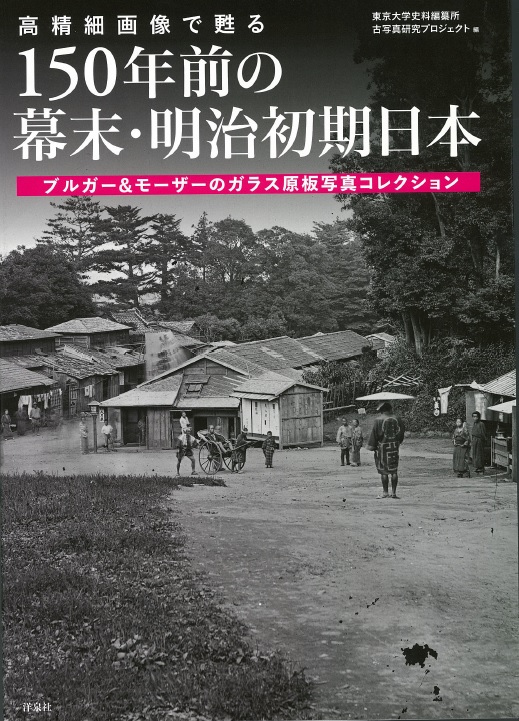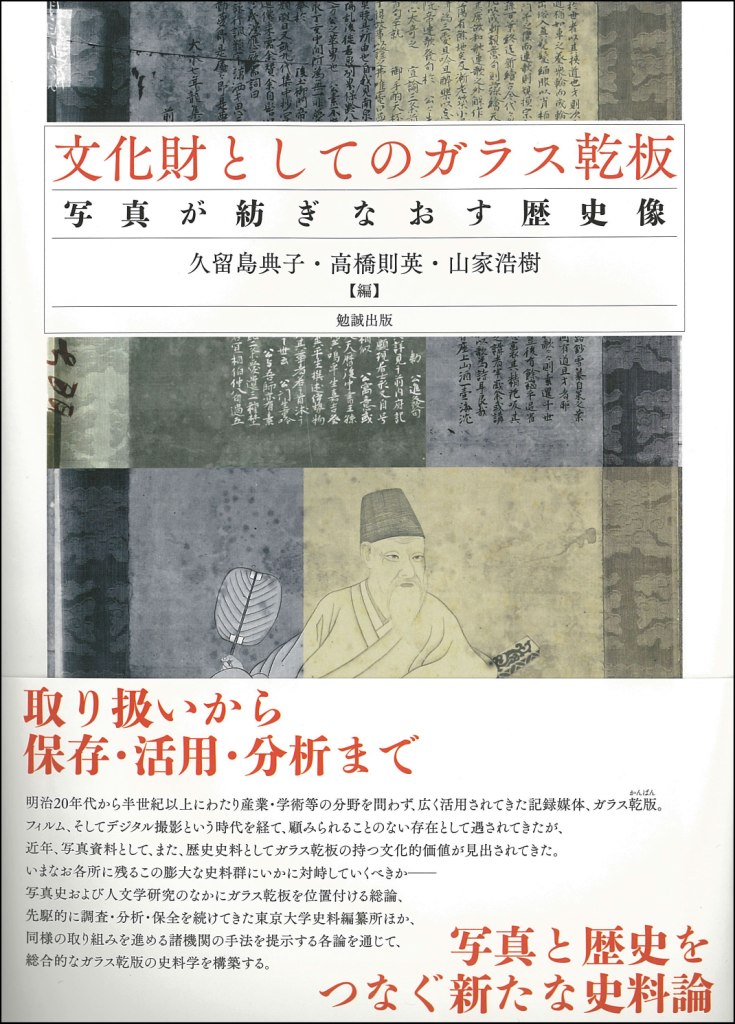
Title
Kouseisai-Gazo de yomigaeru 150-nen mae no Bakumatsu / Meiji Shoki Nihon (Bakumatsu and Early Meiji Japan 150 Years Ago Brought Back to Life with High-Definition Images: The Burger and Moser Collections of Glass Photographic Plates)
Size
344 pages, A4 format
Language
Japanese
Released
February 21, 2018
ISBN
9784800314079
Published by
Yosensha Co., Ltd.
Book Info
See Book Availability at Library
Japanese Page
This book is a collection of photographic materials containing about 270 photographic images and so on related to Japan that are included in the collections of glass plate negatives of the photographer Wilhelm Burger (1844–1920) and his pupil Michael Moser (1853–1912), who accompanied the Austro-Hungarian East Asia Expedition (which arrived in Japan in 1869). It was published as the fruits of joint research conducted under the auspices of the “Old Photographs Research Project” at the Center for the Study of Visual Sources, Historiographical Institute, University of Tokyo.
The Burger Collection is held by the Austrian National Library in Vienna, while the Moser Collection is held by the Kammerhof Museum in Bad Aussee in central Austria, where Moser established a studio after his return to Austria. Moser lived in Japan for several years, working as a photographer for the English newspaper The Far East, and many of the plates of photographs used in this newspaper are also included in the Moser Collection.
Collodion glass plate negatives contain high-definition images at the level of the silver particles. Because the albumin prints of contemporary photographs were created from glass negatives by the contact printing method, only positives of the same size as the glass negative could be obtained. But by zooming in on the image data of photographs of the glass plates taken digitally by using transmitted light, it became possible to observe details that the photographer at the time could never have envisaged. This book includes many zoomed-in images in an attempt to see what sort of information and how much information can be gleaned from them.
Glass plate negatives also possess unique information that is preserved only on the plates. Traces of the photographer’s distinctive use of chemicals and his retouching methods remain on the glass plates, and one can observe various signs of trimming and cutting when the print was produced, including traces of clasps and fingerprints on the outer edges. This kind of information has been provided in this book.
It has also become clear through an analysis of this collection that glass plate negatives were transferred or sold to others. In addition to photographs taken by Burger and Moser themselves, their collections also include many plates by Japanese photographers such as Ueno Hikoma (1838–1904), Shimooka Renjō (1823–1914), and Uchida Kuichi (1844–75), almost none of which exist in Japan. Glass plates were thus being exchanged among photographers. More precise investigations are needed to identify the photographer and the date of individual photographs, and in this book efforts have been made to specify whenever possible the grounds for identifying the photographer and date of a photograph.
This book is filled with interesting information gained by enlarging distant views and small details, such as the oldest photographs of Edo and Nagasaki, dilapidated daimyō residences, street names and indictments attached to gibbeted heads that were deciphered by zooming in to the greatest possible extent, and the streets of Kyoto viewed from the temple Kiyomizudera. As well, the graffiti on shared umbrellas, made visible by zooming in on them, will provide valuable material for learning more about contemporary social mores. It is to be hoped that the high-definition photographic images from the Bakumatsu and early Meiji period (late 1850s to 1870s) reproduced in this book will be utilized by people in many different fields.
(Written by Toru Hoya, Professor/Director, Historiographical Institute / 2018)



 Find a book
Find a book


